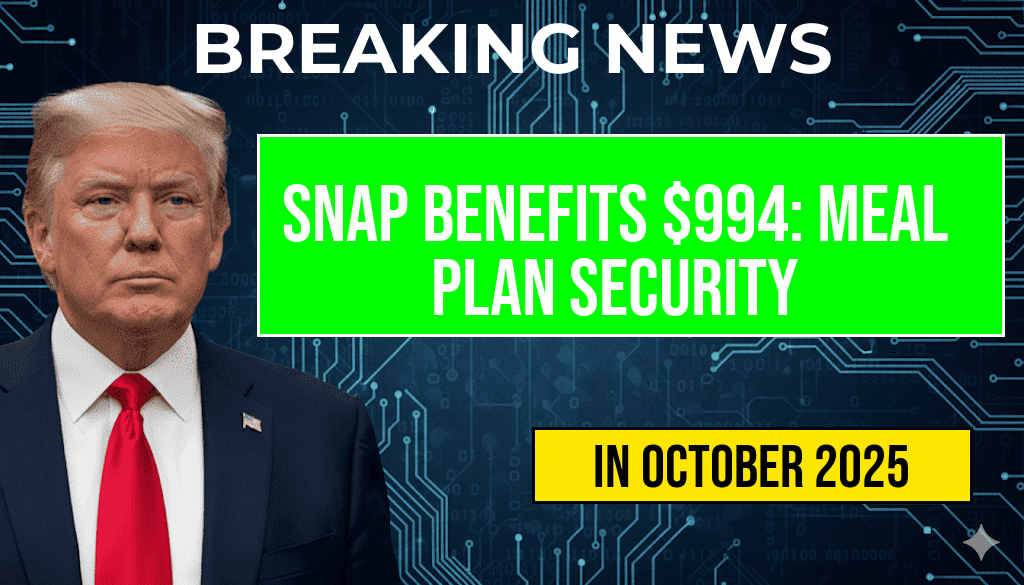SNAP Benefit for Individuals Aged 7 Now $1,571 Monthly—Budget Tips if Government Shutdown Continues
Families relying on the Supplemental Nutrition Assistance Program (SNAP) are facing significant changes as increased benefit amounts for children aged 7 and older take effect. The monthly benefit for a 7-year-old now reaches approximately $1,571, a boost driven by ongoing policy adjustments aimed at addressing inflation and rising living costs. However, with the possibility of a prolonged government shutdown looming, many recipients are concerned about the stability of their benefits and how best to manage their household budgets during uncertain times.
The recent adjustments, part of efforts to expand support for vulnerable populations, come amid broader economic concerns and legislative debates over federal funding. As the shutdown scenario persists, families are advised to review their finances carefully and consider strategic measures to stretch their dollars further, especially if disruptions to benefit payments occur. Experts suggest that proactive budgeting and accessing additional community resources can help mitigate potential hardships during extended periods of federal inactivity.
Understanding the New SNAP Benefit Levels
How Benefits Are Calculated
The recent increase in SNAP benefits reflects changes in federal policy aimed at improving nutritional support for children in low-income households. The benefit amount for a 7-year-old has risen to an average monthly value of $1,571, aligning with updated federal guidelines that account for inflation and regional living costs. These figures are determined based on household size, income, and specific nutritional needs, with the Department of Agriculture overseeing the adjustments.
Implications of the Benefit Increase
While the boost provides immediate relief for many families, some experts note that the actual impact varies depending on individual circumstances. Larger households or those with multiple children may see different benefit levels, and some regions may experience disparities due to state-specific supplement programs. Nonetheless, the increase signifies a concerted effort to ensure that children in low-income families have access to adequate nutrition despite economic pressures.
Potential Impact of a Prolonged Government Shutdown
How a Shutdown Could Affect SNAP
Federal budget impasses threaten to disrupt various social safety net programs, including SNAP. Historically, during shutdowns, the U.S. Department of Agriculture has implemented contingency measures to ensure continued benefit delivery, but these are often limited in duration. If funding lapses for an extended period, recipients might face delays or reductions in their benefits, complicating household budgeting efforts.
Government Funding Status and Households’ Preparedness
As negotiations continue in Congress, families dependent on SNAP are urged to stay informed through official channels and prepare for potential disruptions. Some states have begun to issue guidance on how to access emergency resources or expedite benefits if necessary. The key to navigating a shutdown lies in early planning, including reviewing current budgets and exploring supplemental assistance programs.
Budget Strategies for Families During Uncertain Times
| Tip | Details |
|---|---|
| Prioritize Essentials | Focus spending on housing, utilities, and nutritious food to maintain stability. |
| Use Community Resources | Seek local food banks, community centers, and assistance programs for supplemental support. |
| Create an Emergency Fund | Set aside a small portion of income to cover unforeseen expenses during delays in benefits. |
| Monitor Benefit Status | Regularly check for updates from local SNAP offices or official government websites. |
| Reduce Non-Essential Spending | Limit discretionary expenses such as dining out, entertainment, or non-essential shopping. |
Additional Resources for Assistance
- Community Action Agencies: Many provide emergency financial assistance and food programs. Find local agencies at Community Action Partnership.
- Food Banks: Nationwide networks like Feeding America offer free food and pantry services. Visit Feeding America to locate nearby resources.
- Financial Counseling: Nonprofits such as the National Foundation for Credit Counseling (NFCC) assist with budgeting and debt management. Learn more at NFCC.
Looking Ahead
As discussions in Washington continue, families dependent on SNAP benefits should remain vigilant and proactive. While benefit increases provide temporary relief, ongoing legislative uncertainty underscores the importance of financial resilience and community engagement. Staying informed through official government updates and leveraging local assistance programs can help households weather potential disruptions during a government shutdown.
For more information on SNAP and federal benefits, visit the U.S. Department of Agriculture’s SNAP page and consult your state’s social service website for region-specific guidance.
Frequently Asked Questions
What is the current monthly SNAP benefit amount for individuals aged 7?
The current SNAP benefit for individuals aged 7 is $1,571 per month, providing significant support for eligible families.
How could a government shutdown affect SNAP benefits?
If a government shutdown continues, there is a risk that SNAP benefits may be delayed or reduced, impacting the financial stability of recipients.
What are some effective budget tips during potential SNAP benefit disruptions?
To prepare for possible disruptions, consider creating a budget that prioritizes essential expenses, stockpiling non-perishable foods, and exploring additional community resources.
Who is eligible for the increased SNAP benefits mentioned in the article?
Eligible individuals and families meeting income and household size criteria can receive the increased SNAP benefits of up to $1,571 monthly.
Where can I find more information or assistance regarding SNAP benefits?
For more details or assistance, visit your state’s SNAP office website or contact local social services agencies to stay updated on benefit changes and support options.










